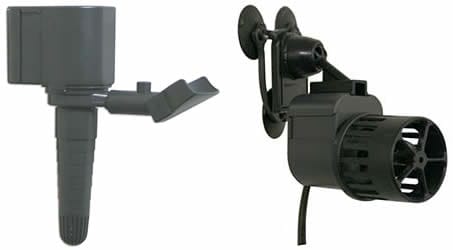Maybe you are ready to convert from a freshwater to a saltwater aquarium. A number of advanced freshwater hobbyists eventually decide to set up at least one saltwater fish tank. Perhaps you saw a spectacular aquarium at a friend’s home or just need a new challenge to keep you interested in the hobby. With the experience acquired from maintaining a freshwater aquarium, it will help you avoid some of the costly beginner mistakes. Remember to be patient and research the fish and equipment you plan to purchase.
Beyond the aquarium, what other equipment is useful? Only some of the equipment, like heaters, powerheads and lights can be reused and even they may need to be replaced or upgraded. In general, gravel and substrates, undergravel filters, bubblers, and most painted decorations and plants shouldn’t be reused in a saltwater aquarium.
Converting An Aquarium Instructions
Start by cleaning the aquarium with a warm water and vinegar solution to remove any calcium deposits. Rinse until the vinegar odor is gone. There is no need to use bleach or soap. Please note that if you used any Copper Based Medication in the aquarium, it shouldn’t be reused for a saltwater reef tank because copper may be present in the silicone, which can leech out and be harmful to corals and other invertebrates. If you only plan to keep fish, a copper treated aquarium will be fine, otherwise you should purchase a new aquarium.

Next, soak the heaters and powerheads in a water and vinegar solution to remove any calcium deposits. Clean the impellers of the powerheads and scrub the heaters gently. If your heater is glass, consider upgrading to a Titanium Heater as they are more difficult to break and will not absorb salt. Most powerheads are suitable in the beginning, but some aquarists upgrade to stronger Powerheads as they become more interested in corals.
For smaller aquariums, standard Hang on the Back or Canister Filters will be acceptable for fish only aquariums. For those planning to keep a reef or have trouble with high nitrates, consider a Hang on the Back Protein Skimmer. A Protein Skimmer works by mixing water and air to create millions of microbubbles. Waste in the water attaches to the microbubbles and is forced into the neck of the Protein Skimmer. When the microbubbles burst, the waste is pushed into the collection cup where it no longer negatively affects water quality, unlike traditional sponge filters. Aquarists with tanks larger than 55 gallons should consider a sump with an In Sump Protein Skimmer, Wet/Dry Filter, Refugium or any combination of the three. Be sure to research the different methods and understand the advantages and disadvantages of each system.
Converting An Aquarium Tips
For lighting, new hobbyists only keeping fish will be able to reuse their current fluorescent fixture, but may want to replace their yellow plant bulbs with white daylight or Blue Actinic bulbs. If you plan to keep a reef aquarium with corals, you may need to upgrade your lighting to Power Compact, T5, Metal Halide or LED. These more intense forms of light, allow the corals to perform photosynthesis. Please note, the lights don’t need to be upgraded immediate, they can be added once you start keeping corals.
You will also hear about this stuff called Live Rock. Live rock is rock from the ocean with living bacteria and organisms on it. Live Rock won’t move by itself or physically grow in size. Live Rock provides extra filtration, a structure for fish to hide in and a place to mount corals. The typical reef aquarium needs .75 to 1.25 pounds of Live Rock per gallon, but this can vary based on the density of rock.
Instead of gravel or fluorite, most saltwater aquariums use Live Sand or Aragonite. These substrates provide a natural buffer against pH drops and won’t need to be siphoned if maintained by the proper clean-up crew consisting of snails, crabs, starfish and shrimp.

Finally, a saltwater aquarium requires salt and some way to measure the salt. You should not use table salt or softener salt. Instead, purchase a Synthetic Salt Mix. To make saltwater with a specific gravity of 1.020, add approximately two cups of salt to five gallons of Reverse Osmosis or tap water. Stir until the salt is completely dissolved. Then measure the salinity or specific gravity with a Hydrometer or Refractometer. Most saltwater aquarists will use Reverse Osmosis water, as it is purified and contains no phosphates or nitrates like tap or well water. This will reduce algae growth and make the hobby easier.
